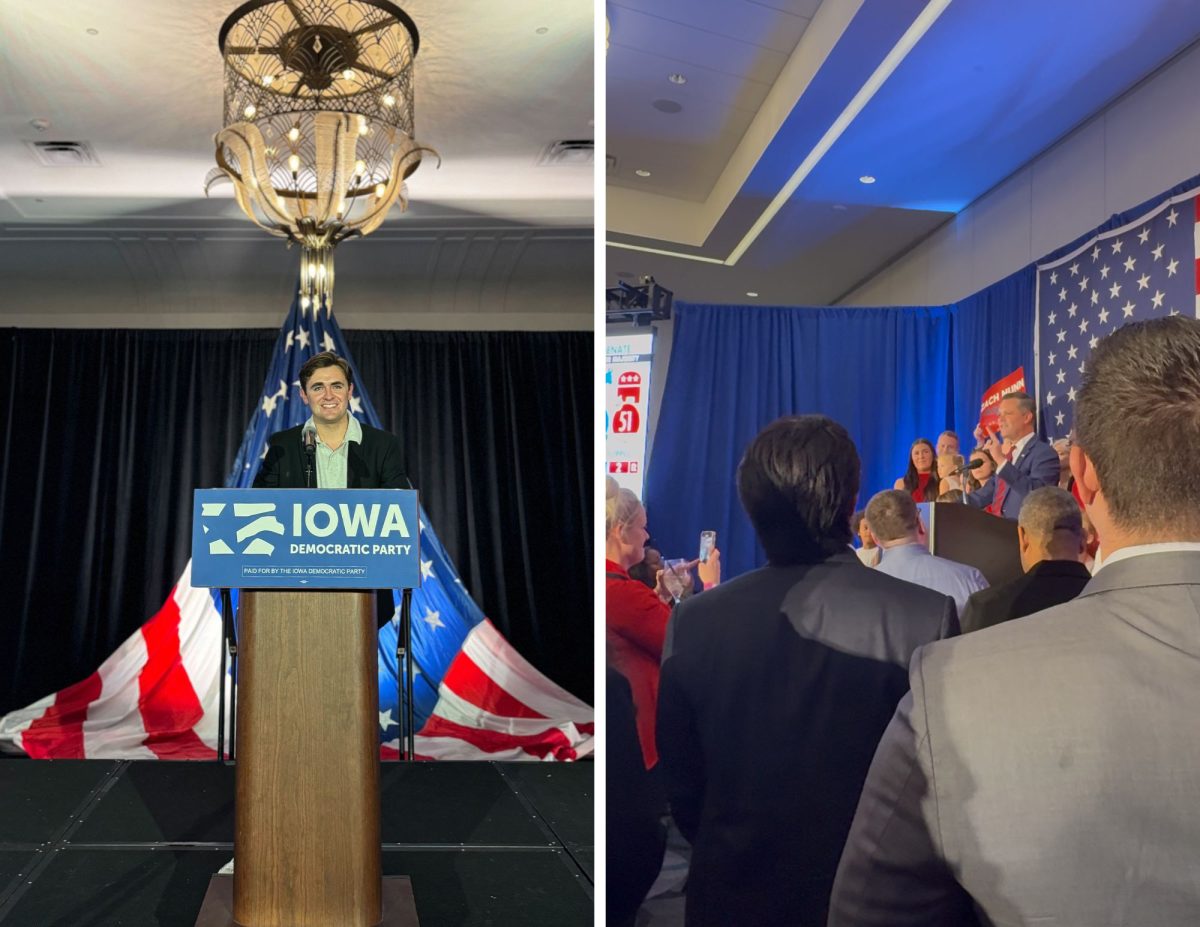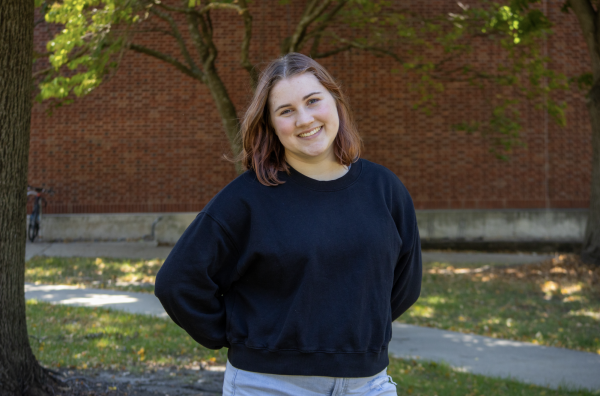In a night of celebration and disappointment, political candidates and their supporters came together on Nov. 5 to watch the future of the country unfold. Two Drake students were on the front lines of this election cycle serving as interns for the Democratic and Republican candidates who ran to represent Iowa House District 3, which includes Des Moines.
Sophomore Jack Harrington was a political fellow for Democrat Lanon Baccam’s campaign. His responsibilities included door-to-door canvassing, phone and text banking, creating social media content and working on campaign events.
Harrington attended the Iowa Democratic Party’s election watch party on election night at the Hotel Fort Des Moines. He arrived to help set up the event at 11 a.m. on Nov. 5 and did not leave until 2 a.m. the following day.
“At the beginning, there was hope and there was excitement,” Harrington said. “But it was clear from the beginning, even before, as people were getting there, that there was nerves, and confidence, especially on the national level, was not strong.”
Sophomore Josie Thompson served as a campaign intern for Zach Nunn, the incumbent Republican representative. Her main responsibilities were encouraging voter turnout through phone banking and door-to-door canvassing, as well as helping with events as Election Day approached.
Thompson felt unity at the Iowa Republican watch party, which was held at the Hilton Des Moines Downtown.
“There felt like no division,” Thompson said. “We were all in this together, just because we were so eager to win. After all this hard work we put in, there was no room to be any more divisive.”
At the Republican watch party, attendees watched the results of races across the country come in live.
“We had Fox News on live in the corner of the ballroom on the giant projector,” Thompson said. “Every time Trump won a state or something, or a representative won, Fox News would play it and…people would cheer.”
District 3 is a competitive district. In 2022, Nunn won against Democrat Cindy Axne by just over 2,000 votes, so both Nunn and Baccam’s campaign teams prepared for a tight race.
Baccam was up in the polls towards the beginning of the night while Polk County votes were being counted.
“I was nervous, but as we talked to people…basically what was exchanged was that it’s just the Polk County votes,” Thompson said. “It’ll be alright, we got this, but it was high hopes, which kind of kept us above water.”
Despite Baccam’s apparent lead, Harrington was not hopeful about the polling numbers that were coming out of Polk County. The margins he was seeing in Polk County were unlikely to outweigh the southern rural counties in District 3.
“I think there were some signs early in the night,” Harrington said. “Just based on the results from Polk County, they weren’t looking like we had enough to win.”
The AP called the race for Nunn at 11:19 p.m. Despite the results of this election, Harrington is proud of what the campaign was able to accomplish.
“You can find a lot of solace in the fact that [Baccam] came into this race with quite literally 0% name recognition, and now every single person in this district knows who Lanon Baccam is, and everybody knows what he stands for,” Harrington said.
On Nov. 2, days before the election, the Des Moines Register published a poll conducted by pollster J. Ann Selzer that showed Harris leading Trump in Iowa by three points. According to Thompson, this poll made Iowa Republicans slightly worried about the presidential election, but the energy in the room was confident.
“We didn’t get too nervous or freak out really, because we were all together,” Thompson said. “We were in it together and we did everything we could at that point, and we knew that we had strong supporters.”
According to Harrington, the possibility of Iowa going blue energized Democrats in Iowa.
“There was a lot of excitement, and that, in the end, might have been [why] we got so high and then came down much harder because of it,” Harrington said.
However, around 9:40 p.m., the Associated Press called Iowa for Trump. The final margin in the state was 56 to 42.7, meaning Trump earned nine points more than Selzer anticipated.
“It just kind of goes to show that that last poll wasn’t very accurate because I was always one for Trump,” Thompson said. “[Iowa] voted him for caucuses by a lot, so it kind of verified our feelings. It was a nice cheer in the crowd when he won Iowa, especially by so much.”
As the night went on, more swing states tipped red. Harrington said these discouraging results prompted many attendees to leave the watch party.
“It stung,” Harrington said. “I think some people had an idea that it might not be the greatest night for Democrats, but I think some people either thought it was gonna be close or maybe Kamala [Harris] would win. She didn’t. As that kept going, there was definitely a bit of shock and just disbelief.”
Despite the close margins predicted for both the presidential and the house races, Thompson was confident in the Republican candidates.
“I had a feeling at the beginning of the day, to be honest,” Thompson said. “That morning, for some reason, I was like, ‘I think Trump and Zach [Nunn] are gonna win.’”
Although the AP did not officially call the presidential race for Trump until 5:34 a.m. ET on Nov. 6, Harrington and other attendees of the Democratic watch party knew Harris had lost the race before the party ended around 2 a.m.
“Once we knew Pennsylvania was called, everybody accepted that Trump had won,” Harrington said. “It was very disappointing, but we saw the writing on the wall.”








